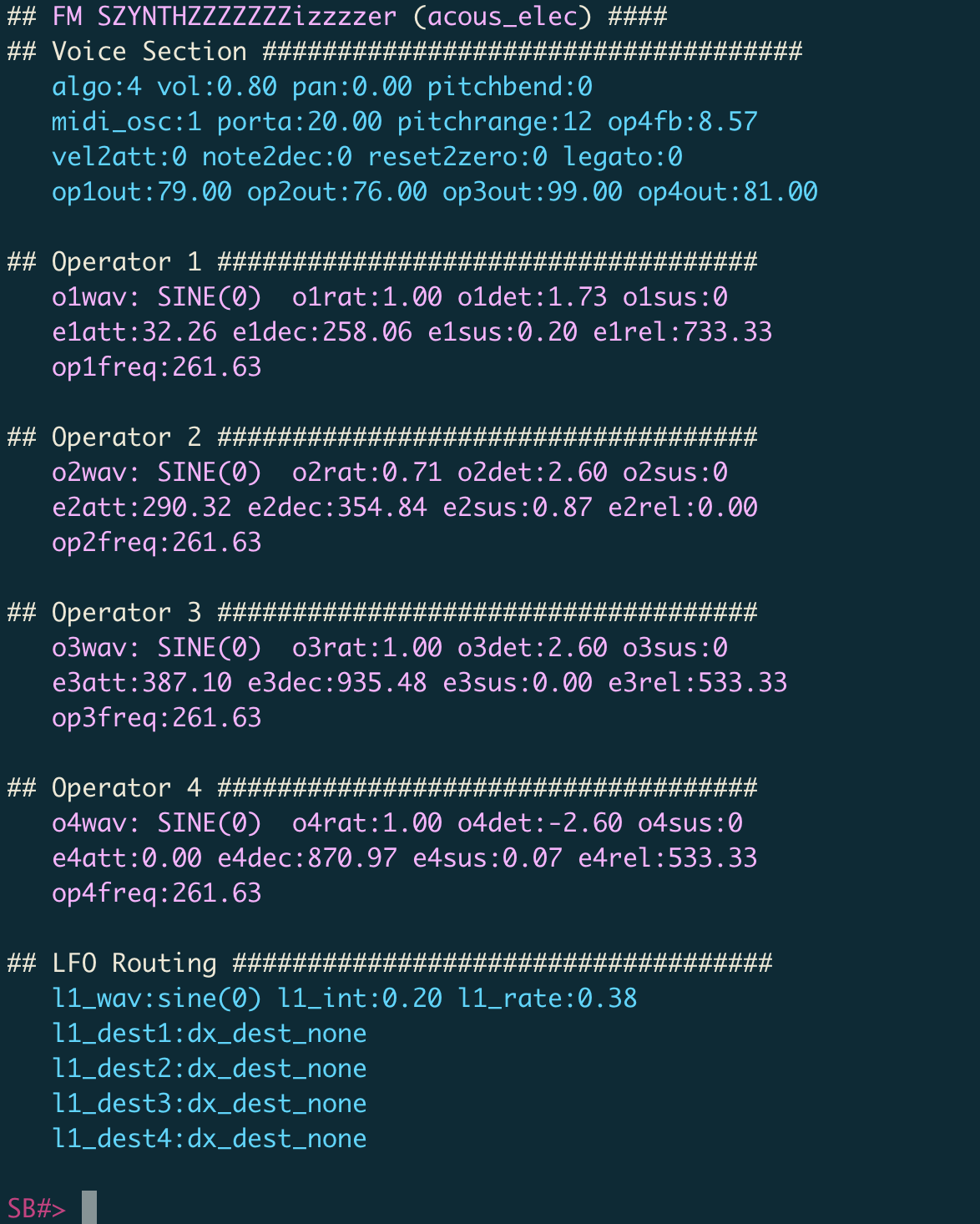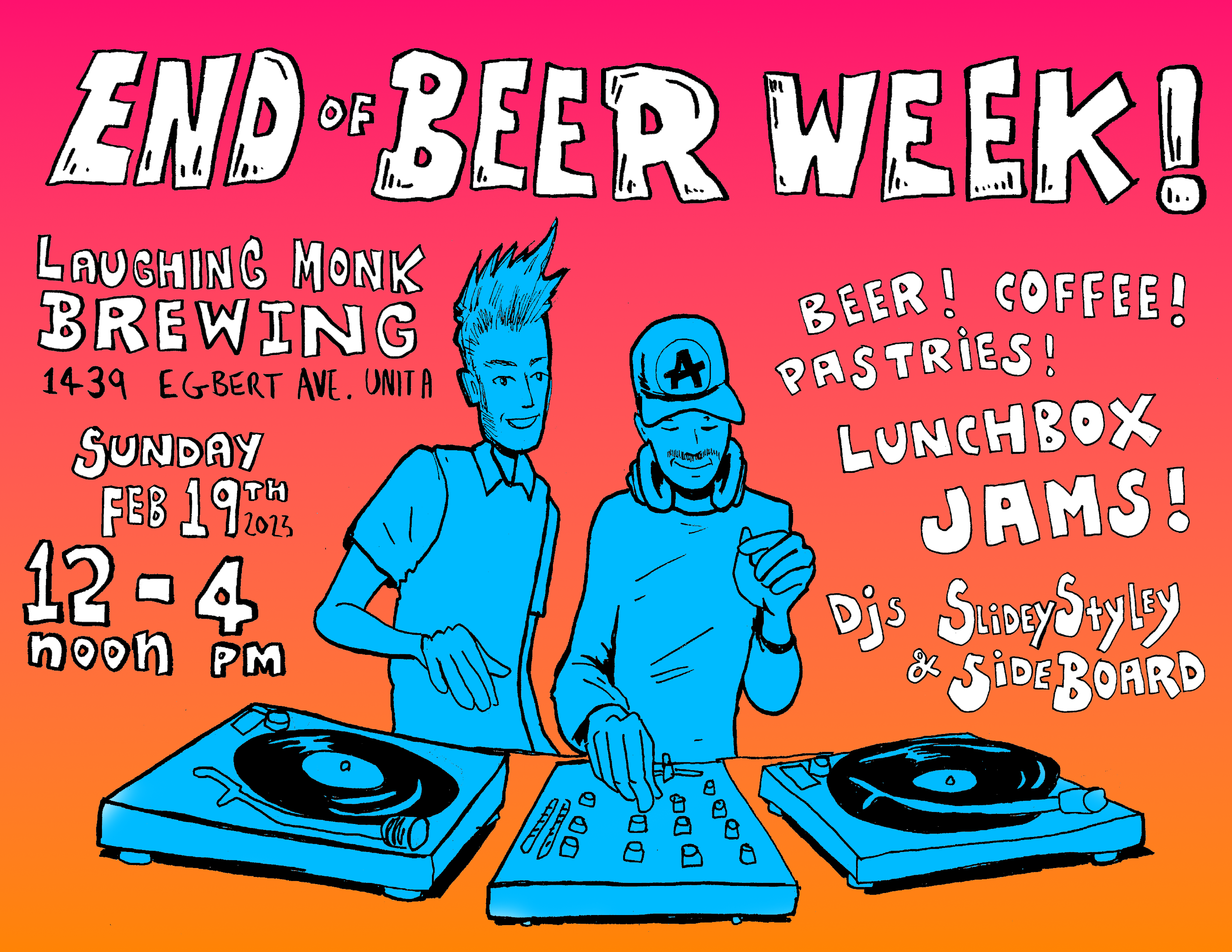Algorithmic Art Assembly v3.0
Website is live at https://aaassembly.org/ and earlybird tickets available at Gray Area!
Website is live at https://aaassembly.org/ and earlybird tickets available at Gray Area!


As I’ve been designing my own patches, I have become more curious about the original DX presets, some of which have their own kinda cult following, especially the Jazz Organ preset, which is maybe mostly widely down from Robin S’s “Show Me Love”. (See an excellent wee blog post on its history and mix from Mark Fell here.)
I discovered there are many resources online for sharing DX patches, which can be loaded into compatible synths. The DX line of synths use a binary format called SysEx to store and transmit patches. SysEx messages became an unofficial but de facto standard, and you can find lots of SysEx files online. The ones I found were specifically Midi bulk data messages containing 32 Voice VMEM. Specifically this has a 6 byte header, then 32 voices stored in 4096 bytes, and a closing 2 bytes footer.
While searching I found many Sysex librarian programs which allow you to manage and apply the voices but I couldn’t find what I was looking for - a way to just display the settings stored within the DX100 SysEx files. The closest I did find was this dxsyx, a “C++ library for manipulating DX7 SysEx files”, which offers a human readable YAML output, which is exactly what I was looking for, however that library is only the DX7 with its 6 operators, and not compatible with DX100 Sysex format. The original Yamaha DX synth, the DX7, has 6 Operators which are combined into 32 algorithms. The later DX100 and compatible DX21 and DX27, all used 4 Operators organized in 8 algorithms.
I decided to write my own parser, I figured it could be quite a fun exercise! I borrowed quite a lot of code from the before-mentioned dxsyx, a lot of the header checks and the general approach. Quite simple really, read the file into a data array (std::vector<uint8_t>), and peel it off byte by byte, mapping the bytes to the expected Sysex fields. Where my dumper differs from dxsyx is in the parsing of the bytes, which need to be mapped correctly to the values needed for the Voice and Operator values, specific to the synth model.
The hardest part was finding an exact specification of the DX100 Sysex format to ensure the binary data I was reading was being mapped to the correct data field.
The DX-100 manuals I could find listed the Sysex VMEM data fields in detail:






Pretty awesome skateboarding love letter to SF!
Hihi! new edition of my regular monthly radio ..
This is an awesome documentary by local fella, Pete Koff, which I had the pleasure of seeing last year at a local showing at the Great Highway Gallery. Pete has contributed a great wee story about skating in Pacifica in the 80s, for our upcoming issue #5 of the B0ardside (mark yer calendar - next backyard show will be June 17th - will have art installation by Anthony R Grant, and music by Neutrals and Shatter Pattern - more details to come!)
Pierre is a local neighborhood character, who cycles past my door almost daily. He has amazingly rich history as chronicled here!
Me and Michael will be DJing at Laughing Monk brewing for a wee end of Beer Week celebration. Afternoon jams!

Hey hey!
Putting on another backyard art show, with several bands and a new issue of the zine rready!
10th September 2022 - 43rd and Moraga, OB415.

I took part in the monthly Resident Electronic sessions last week, was super fun!
Here’s my set from it:
Recordings now ready from the backyard live shows at the weekend!
Cindy on saturday ..
China on sunday…
Awesome wee vid of my neighborhood!
Finally edited the video footage from our last art show, Brent Willson’s Lost City and Bridge Bardo!
The sky above the port was the color of …
Wed, September 9, 2020, San Francisco.
The sky above the Bay Area was filled with orange ash and smoke which came from the Bear Fire burning near Oroville, 150 miles northeast of San Francisco.
Music by TVO - “Sketch 3 - Hydroacoustics” from https://t-v-o.bandcamp.com/album/distant-lights-receding
Ah, super lovely review of My Side Of The City and The B0ardside #1 from my buddy Dan Shahin ..
This is taken from a longer livestream here.
thanks Dan!
Finished a comic I’ve been working on this past year - over at the Drawing B0ard -

Oh, should have posted this a while back!
All videos from the Algorithmic Art Assembly conference/festival I ran in March, are now online –
Friday Day
Friday Night
Saturday Day
Saturday Night
Pretty decent wee documentary on the changing face of SF from VICE mag. Near the beginning a lot of the location shots don’t match the narrative, but the interview with Andre Nickatina makes it totally worthwhile!